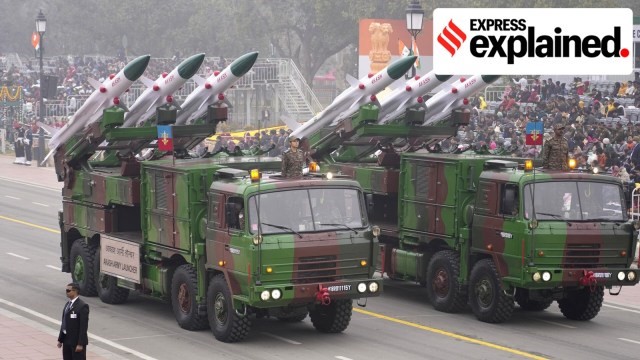Operation Sindoor

- 18 May 2025
In News:
Operation Sindoor marked a significant leap in India's military and technological prowess, not only achieving its strategic objectives but also demonstrating the operational maturity of Made-in-Indiadefence systems. The operation was characterised by a multi-layered approach involving precision strikes, air defence, unmanned systems, and advanced surveillance tools—most of which were indigenously developed.
Precision and Navigation Capabilities
One of the defining features of Operation Sindoor was the pinpoint accuracy of strikes deep inside Pakistan and Pakistan-occupied Kashmir. Specific terrorist camps and infrastructure were destroyed with minimal collateral damage, underlining India’s commitment to responsible military engagement. This precision was enabled by a combination of advanced guidance systems and real-time data from space-based and ground-based assets.
India's indigenous Navigation with Indian Constellation (NavIC) system, offering positional accuracy of 10–20 cm, played a pivotal role. High-resolution satellites such as Cartosat, RISAT, and EOS provided real-time imagery, allowing sub-metre targeting. These capabilities are a result of sustained investments by DRDO and ISRO and reflect the prioritisation of guidance and navigation as a critical technology domain in DRDO’s 2023 R&D roadmap.
Lethality and Advanced Weapon Systems
The destruction caused during Operation Sindoor also demonstrated the high lethality of Indian weapon systems. Deep penetration warheads, advanced fusing mechanisms, and powerful propulsion systems—developed under the Integrated Guided Missile Development Programme—were central to the operation’s success. The likely use of the BrahMos missile, equipped with state-of-the-art guidance and propulsion, underscores the maturity of indigenous missile technology.
Emerging technologies such as Directed Energy Weapons (DEWs), including laser-based systems, were reportedly deployed to neutralise incoming drones. DEWs have been a priority sector for the Defence Ministry since 2022, and DRDO showcased them during the 2025 Republic Day Parade.
Integrated Air Defence and Radar Systems
A critical success factor in Operation Sindoor was India’s ability to neutralise almost every aerial threat, including drones and missiles. This was achieved through a combination of imported and indigenous systems. The S-400 Triumph, along with DRDO-developed radars like Rajendra, Rohini, LLTR, and low-level 3D radars, formed a robust air defence network. These systems enabled accurate detection, tracking, and interception of aerial threats.
Cutting-edge R&D continues in radar technologies, including AI-powered signal processing, stealth detection, and foliage-penetrating radars, which will further enhance India’s battlefield awareness and response capability.
Role of Unmanned Systems
For the first time in an India-Pakistan conflict, drones played a decisive role. Indian UAVs executed deep strikes into Pakistani territory, while enemy drone swarms were largely neutralised. India also deployed upgraded Bofors guns and SAMAR systems to counter low-flying threats. The success of unmanned platforms indicates a paradigm shift towards hybrid warfare, with manned-unmanned teaming becoming a future norm.
However, to sustain this capability, India must strengthen its domestic manufacturing base, ensure secure raw material supply chains, and foster collaboration between industry, academia, and the armed forces.
Conclusion:
Operation Sindoor represents a watershed moment in India’s defence preparedness. It validated years of indigenous R&D and affirmed India’s self-reliant defence posture. As warfare evolves, India’s ability to synergise space, cyber, and kinetic capabilities with unmanned platforms will be critical in ensuring strategic deterrence and national security.
